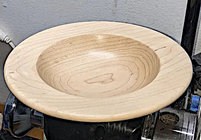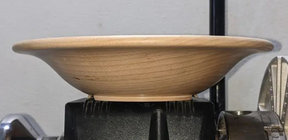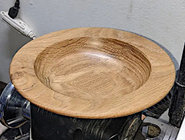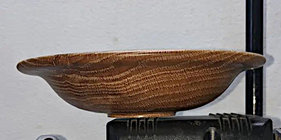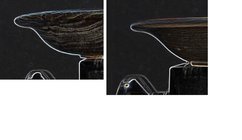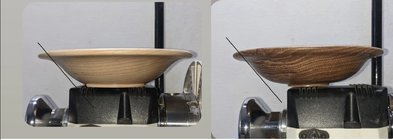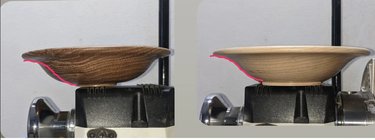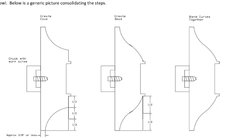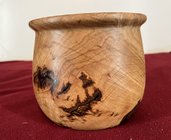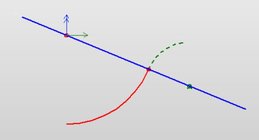This comment is from someone who gets it right sometimes and just as often ends up turning the bowl smaller to reshape it when things just don't work. Lately I have been very careful to maintain a continuous curve. It seems, (as mentioned by others) that the oak bowl doesn't manage that .
My bowls don't often have as much of a well defined base as yours and I am used to that look. To say it another way, my bases are there but pretty much hidden in under the curve of the bowl, not as deep/high as yours.
Seems that most others liked the horizontal width of your bowl rims. I found them a bit wide. Didn't hold my interest or maybe detracted from the inside shaping. I say this partly because I didn't understand whether the wide rim was intended as utilitarian or an intentional design element. For quite a while I have liked a modest finger hold for both utility and interest.
I am beginning to work on adding some interest to the rims of my bowls. I am about to try to learn knurling for a bowl with a rim as wide as yours. That will be strictly for interest, not utility.
As I looked for pictures to illustrate what I have written I have realized that I now depend a great deal on character in the wood to make up for my own lack of artistic flair. When turning relatively plain work, that's where I try extra hard to include a design feature because the wood by itself doesn't hold the eye for long.
Attached picture shows the finger rim that I like sometimes. Not as an example of what a great turner I am, just the particular appearance of the finger rim.
I'm with several others - if those are your first two attempts you'll be awesome after a bit more time on it.
Like I said, take it for what it's worth. I'm not qualified to critique anyone else's work!
